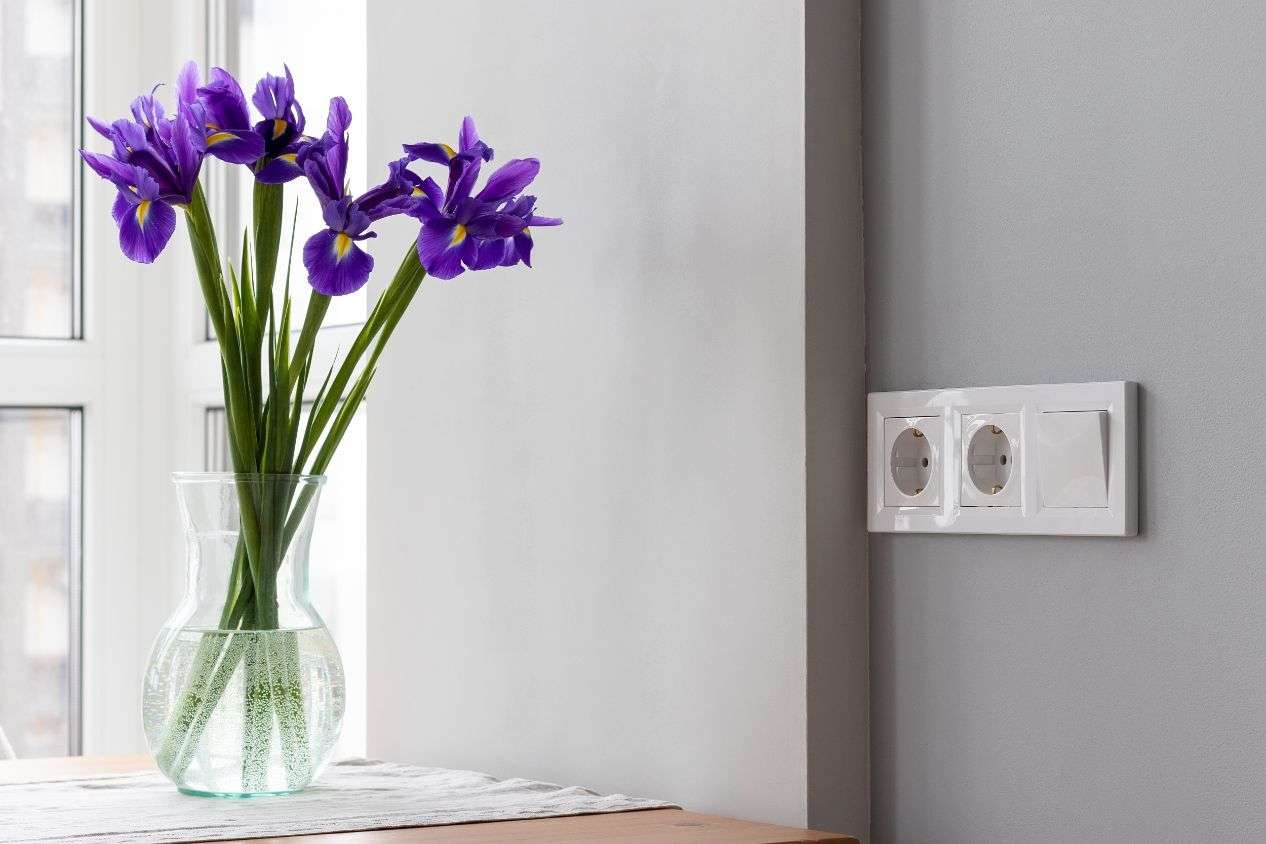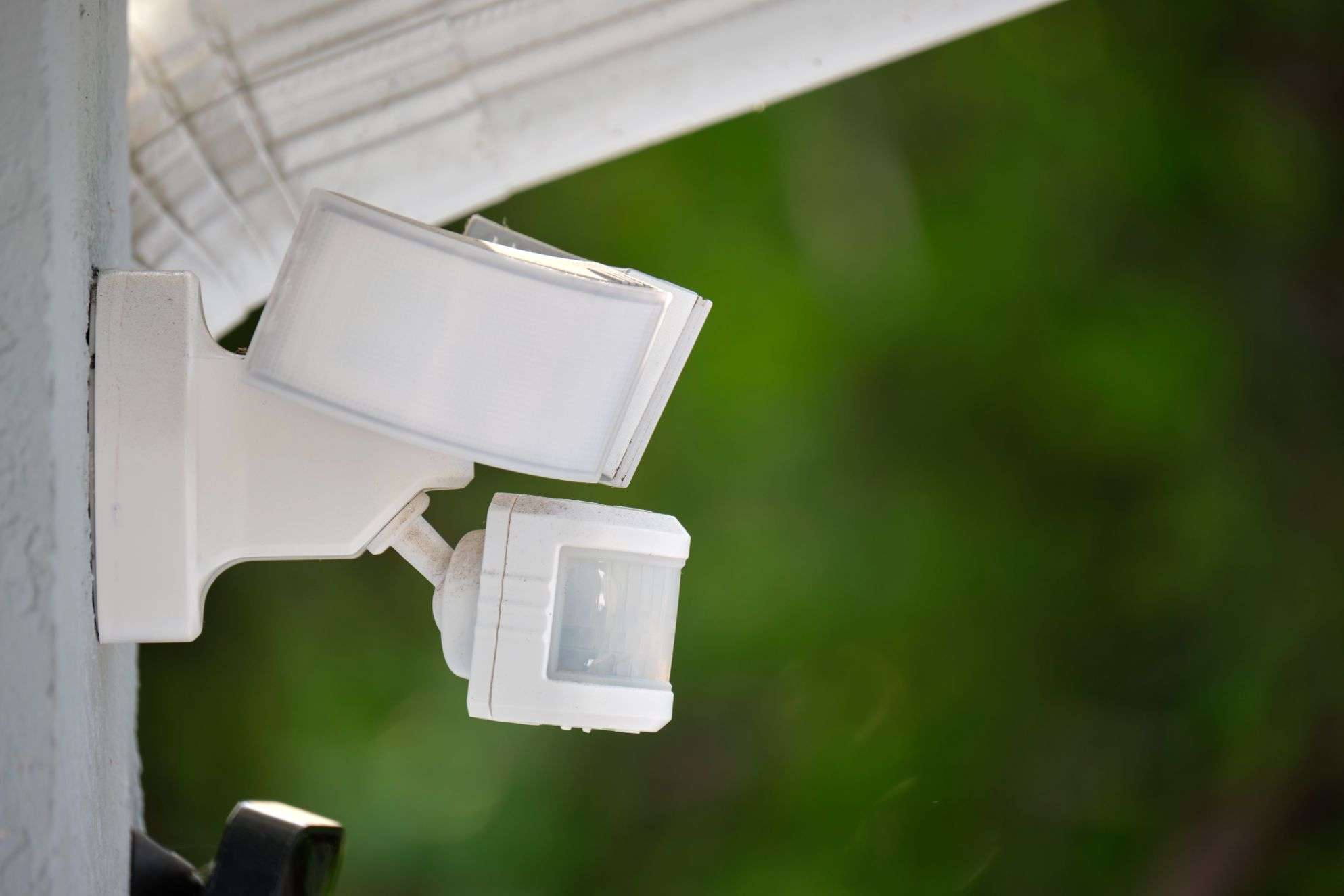- Smart Bulbs
- Smart Light Strips
- Smart Light Switches
- Smart Lighting Systems
- Outdoor Smart Lighting
- Motion-sensing Smart Lighting
Smart Bulbs

Smart light bulbs are more than just sources of light – they’re gateways to a world of convenience and creativity. These intelligent bulbs offer a plethora of benefits that extend beyond traditional lighting. However, it’s also important to weigh their advantages against some potential disadvantages that come along with their advanced features.
Adaptive Lighting Control
Imagine the convenience of adjusting the lighting level in any room without needing to reach for a physical switch. Smart light bulbs offer adaptive lighting control, allowing you to customize brightness levels according to your mood or activity. Whether you’re engrossed in a movie night, hosting a cozy dinner, or simply relaxing with a book, these bulbs enable you to fine-tune the lighting to create the perfect ambiance.
Dynamic Color Exploration
Traditional bulbs are limited to a single hue, but smart light bulbs open up a world of colors for you to explore. These bulbs often offer a spectrum of colors that you can adjust according to your preference or the occasion. From vibrant parties with pulsating hues to serene evenings with soft, warm tones, you can set the mood and transform your space at the tap of an app.
Scheduling and Automation
Incorporating smart light bulbs into your daily routine is where your intelligence truly shines. You can schedule lights to turn on or off at specific times, simulating your presence even when you’re away from home. This adds an extra layer of security and can help in energy conservation. Moreover, automation features allow lights to respond to triggers like motion detection, seamlessly integrating with other smart devices in your home ecosystem.
Smart Ecosystems
Smart light bulbs are not solitary players; they’re part of a broader smart home ecosystem. Many brands and models can be integrated with popular virtual assistants like Amazon Alexa, Google Assistant, and Apple HomeKit. This integration enables voice control, empowering you to command your lights with simple vocal instructions. Furthermore, compatibility with home automation platforms lets you craft intricate lighting scenes that synchronize with other smart devices, enhancing your overall smart home experience. Smart light bulbs also introduce an unprecedented level of energy efficiency to your home. With the ability to dim the lights or turn them off remotely, you have precise control over energy consumption. Additionally, many smart bulbs are equipped with energy-efficient LED technology, further reducing your electricity bill while contributing to a greener planet.
Cost Investment
In all the advantages of using smart light bulbs, one of the primary hurdles with smart light bulbs is the upfront cost. Compared to traditional incandescent or even LED bulbs, smart bulbs can be significantly more expensive. The price tag reflects the advanced technology, wireless connectivity, and added features embedded within each bulb. While the long-term energy savings and convenience might offset this initial investment, the higher upfront cost can be a deterrent for some budget-conscious consumers.
Dependence on Technology
The other disadvantage you need to consider before selecting smart light bulbs is they operate in tandem with technology. They require a stable Wi-Fi or Bluetooth connection, as well as a compatible smartphone or smart device to control them. In case of network outages, connectivity issues, or software glitches, you may find yourself temporarily unable to control your lighting as desired. This dependence on technology can lead to frustration if you encounter connectivity hiccups or if you prefer a more traditional lighting control approach.
Smart Light Strips

Smart light strips are a remarkable evolution in lighting technology that goes beyond traditional illumination. These flexible LED strips, often featuring wireless connectivity and customizable color options, offer a range of advantages that can transform the ambiance of any room.
Ambient Lighting Mastery
Smart light strips excel at creating ambient lighting effects that can elevate your space to new heights. Whether you’re aiming for a calming, cool-blue glow or a cozy, warm hue, these strips can wrap your room in the desired ambiance. Their flexibility and ability to be discreetly installed under furniture, along edges, or even behind decorative elements make them versatile tools for achieving the perfect mood. With the ability to produce millions of colors, smart light strips enable you to paint your room with light. From soothing pastels to eye-catching neon hues, you have complete control over the color scheme. This expansive color palette lets you match the lighting with various occasions, seasons, or simply your personal preference at any given moment.
Dynamic Effects and Animations
One of the standout features of smart light strips is their capacity for dynamic effects. These effects range from gentle color transitions and pulsating rhythms to synchronized flashing patterns. By creating these captivating animations, you can infuse your space with energy during parties, relax during movie nights, or even simulate the soothing flow of natural light throughout the day.
Architectural Enhancement
Smart light strips aren’t just about colors and effects; they can also enhance the architecture and aesthetics of your space. When thoughtfully installed along architectural lines, shelves, or under cabinets, they can create visually striking outlines that accentuate the contours of your room. This architectural enhancement adds a touch of modernity and uniqueness to your interior design.
Installation Complexity
While the flexibility of smart light strips allows for creative installation, it can also introduce complexity, especially for those with limited DIY experience. Properly adhering the strips to surfaces, ensuring consistent lighting coverage, and concealing cables can be challenging. Inaccurate installation might lead to uneven lighting or premature wear and tear on the strips.
Limitations in Illumination Intensity
Smart light strips are excellent for creating ambiance and accent lighting, but they might not be suitable as the primary source of bright illumination in a room. Depending on the quality and specifications of the strips, they might lack the brightness necessary for tasks that require focused, intense lighting. This could limit their functionality in certain scenarios. It’s important to note that while these potential disadvantages exist, they don’t negate the transformative impact that smart light strips can have on your living spaces.
Smart Light Switches

Smart light switches have emerged as a game-changing innovation, redefining the way we interact with the lighting in our homes. By seamlessly integrating with existing light fixtures, these switches bring a host of advantages that go beyond the conventional flip of a switch.
Effortless Control
One of the standout advantages of smart light switches is the convenience of remote control. Whether you’re in the comfort of your living room or miles away from home, you can effortlessly turn lights on or off using your smartphone. This remote accessibility ensures that you never have to return to a dark home or worry about leaving lights on unnecessarily, enhancing both convenience and energy efficiency.
Lighting Customization
Smart light switches grant you unparalleled control over your lighting environment. With adjustable brightness levels and dimming capabilities, you can set the perfect ambiance for any occasion. Whether it’s a cozy dinner, a movie night, or a vibrant party, you have the power to fine-tune the lighting intensity to match the desired mood and atmosphere. Smart light switches not only enhance functionality but also contribute to the aesthetic appeal of your living spaces. Many smart switches feature sleek and minimalist designs that blend seamlessly with modern decor. Their unobtrusive appearance adds a touch of elegance to your walls while concealing the advanced technology within.
Voice Control
One of the most remarkable features of smart light switches is their compatibility with virtual assistants like Amazon Alexa, Google Assistant, and Apple Siri. This integration opens the door to effortless voice control, enabling you to command your lights with simple vocal instructions. This hands-free approach adds an extra layer of convenience to your daily routine.
Long-Term Energy Savings
By allowing precise control over lighting levels, smart light switches contribute to energy savings. You can easily adjust the brightness to match your needs, reducing unnecessary energy consumption. Furthermore, the ability to remotely turn off lights left on by accident can significantly contribute to lower electricity bills over time. smart light switches empower you with a level of control that was once confined to the realm of imagination. They offer convenience, customization, and energy efficiency, making them a fundamental component of any modern smart home setup.
Loss of Manual Control
While smart light switches offer convenient remote control and automation, they can sometimes lead to a loss of manual control. In situations where your smartphone or voice control isn’t available, such as during a network outage or if you’ve misplaced your phone, you might find it challenging to turn your lights on or off without resorting to the traditional switch.
Selling Considerations
If you’re living in a rented space or plan to sell your home in the future, the presence of smart light switches could pose challenges. Some landlords might not allow the installation of such switches, and potential buyers might have varying levels of familiarity or interest in smart home technology. Reverting to traditional switches before moving out could become a necessity, leading to additional effort and potential costs.
Smart Lighting Systems

Smart lighting systems stand as a pinnacle of innovation in the world of home illumination. Distinct from individual smart light types, these systems encompass a holistic approach that transcends the capabilities of any single light fixture. By harmonizing various types of smart lights, controls, and automation, smart lighting systems offer a range of advantages that redefine how we experience lighting in our homes.
Integration and Synergy
The core differentiator of a smart lighting system lies in its integration prowess. Instead of operating as isolated units, smart lighting systems unite different types of smart lights, such as bulbs, strips, and switches, under a centralized ecosystem. This integration enables seamless coordination, allowing you to create immersive lighting scenes that span multiple fixtures and spaces. For instance, you can synchronize your smart bulbs, strips, and switches to orchestrate a movie night ambiance that dims the lights, sets the color temperature, and adjusts the brightness, all at once.
Sophisticated Automation
Smart lighting systems excel in automation capabilities that extend beyond the on/off convenience of individual smart lights. By utilizing motion sensors, time-based triggers, and even external factors like sunrise and sunset times, these systems can autonomously adjust the lighting environment. Imagine waking up to gentle sunrise-simulating lights or returning home to a well-lit entrance that responds to your presence.
Centralized Control
A hallmark of smart lighting systems is centralized control. Instead of managing each smart light separately, these systems often feature a hub or bridge that serves as a control center. This hub enables unified control over all connected lights, offering an intuitive interface where you can organize zones, set schedules, and implement automation routines with ease.
Holistic Experience
The most noteworthy advantage of smart lighting systems is the holistic experience they provide. They transcend the capabilities of individual smart lights by creating a unified, immersive environment. With the ability to control multiple light types and scenes from a single platform, you’re not just controlling lights; you’re shaping the atmosphere of your entire home. Smart lighting systems redefine the way we interact with light by transforming it into a dynamic, adaptable medium. Their integration capabilities, customization potential, and sophisticated automation make them an ideal choice for those seeking a comprehensive lighting solution that goes beyond the limitations of individual smart light types.
Dependence on Hub
Many smart lighting systems rely on a central hub or bridge to function properly. If the hub experiences connectivity issues or malfunctions, it could impact the entire system’s performance. This dependence on the hub’s functionality adds an element of vulnerability to the system’s overall operation. Setting up a smart lighting system can also be more complex compared to installing individual smart lights. This is especially true if the system involves a central hub or bridge that needs to be configured and integrated with various light fixtures. The initial setup might require some technical know-how or assistance, which could be a barrier for users who are less familiar with technology.
Higher Initial Cost
Smart lighting systems often come with a higher upfront cost compared to individual smart light types. This cost encompasses not only the lights themselves but also the central hub or bridge required for system-wide control. While the advanced features and comprehensive control might justify the investment, the initial expense could be a deterrent for some users. Not only that, While smart lighting systems offer integration and synchronization benefits, they might be limited in terms of the types of fixtures they can control. Not all fixtures can be seamlessly integrated into a system, which could limit your choices when it comes to lighting aesthetics or specific fixtures that are not part of the system’s ecosystem.
Outdoor Smart Lighting

Outdoor smart lighting, distinct from indoor options, is designed to enhance and secure the exterior areas of your home. From pathways and patios to gardens and driveways, these smart lighting solutions offer a range of unique benefits that cater to the specific needs of outdoor spaces.
Safety and Security
Outdoor smart lighting acts as a deterrent against intruders and enhances safety by illuminating dark pathways, entryways, and perimeters. With motion sensors, you can trigger lights to turn on when movement is detected, alerting you to any activity around your property. This level of security extends your smart home’s protective shield to the outdoor realm. Outdoor smart lighting can also integrate with your home’s security system, creating a comprehensive safety net. For instance, if your security cameras detect movement, you can program the outdoor lights to illuminate the area, enhancing visibility and potentially deterring intruders.
Extended Usability
By integrating outdoor smart lighting, you can extend the usability of your outdoor spaces well into the evening. Whether you’re hosting a dinner party on the patio or enjoying a peaceful night in the garden, these lights provide the necessary illumination for outdoor activities, creating a comfortable and inviting atmosphere. Outdoor smart lighting allows you to control your exterior lights remotely, eliminating the need to manually switch them on or off. Whether you’re arriving home late or want to turn on the lights for a late-night stroll, you can do so with a few taps on your smartphone or a voice command.
Energy Efficiency
Just like their indoor counterparts, outdoor smart lights offer energy-efficient LED technology and the ability to customize brightness levels. This customization ensures that you’re using the right amount of light for the task at hand, preventing light pollution and unnecessary energy consumption. The advantages of safety, extended usability, and seamless integration with security systems make outdoor smart lighting an essential addition to any well-rounded smart home ecosystem. As we explore different types of smart lighting, you’ll discover how each brings its own unique brilliance to the overall illumination experience.
Exposure and Wear
Outdoor smart lighting systems are subjected to environmental elements such as rain, snow, heat, and cold, which can lead to wear and tear over time. Unlike indoor lights that are protected from such conditions, outdoor lights need to be weather-resistant and durable. The exposure to outdoor elements might result in a shorter lifespan or the need for more frequent maintenance compared to their indoor counterparts. Additionally, extreme weather conditions could potentially affect the performance and reliability of outdoor smart lighting systems, making regular upkeep and protection essential for their long-term functionality. This need for weatherproofing and maintenance is a unique consideration for outdoor smart lighting that indoor smart lights do not share.
Motion-sensing Smart Lighting

Instant Illumination
The standout advantage of motion-sensing smart lighting is its ability to provide instant illumination as soon as motion is detected. Whether you’re entering a room, walking down a hallway, or stepping into the yard, the lights automatically turn on, eliminating the need to fumble for switches in the dark. Many motion-sensing smart lighting systems allow you to adjust the sensitivity and duration of the motion sensor. This adaptability lets you tailor the lighting response to your preferences, preventing lights from activating unnecessarily due to minor movements or lingering activity.
Effortless Energy Conservation
Motion-sensing smart lighting operates on a simple yet impactful principle: lights are activated only when motion is detected. This means that in areas where motion is infrequent or temporary, such as hallways, corridors, and certain rooms, the lights remain off until someone enters the space. This on-demand illumination prevents lights from being left on accidentally, reducing unnecessary energy usage. In addition to turning on when motion is detected, motion-sensing smart lighting systems often have built-in timers. After a period of inactivity, the lights automatically turn off. This prevents lights from being left on when a room is unoccupied or when motion is no longer detected. These automatic turn-off features ensure that energy is conserved when lighting isn’t required.
Control for Continuous Illumination
While motion-sensing smart lighting excels in immediate response and energy efficiency, it has a unique limitation related to continuous illumination. In scenarios where continuous lighting is required, such as during a stationary activity like reading or working at a desk, the motion sensor might interpret the lack of movement as inactivity and turn off the lights prematurely. This limitation makes motion-sensing smart lighting less suitable for situations that demand prolonged, steady illumination without frequent movement. However, it’s important to note that the aim of motion-sensing smart lighting is to provide efficient lighting on demand, and this limitation is inherent to its design. Combining motion-sensing smart lighting with other types of lighting solutions, such as dimmable smart bulbs or switches, can help mitigate this disadvantage by offering more control over lighting intensity and behavior based on specific needs.
In the ever-evolving world of modern illumination, a diverse array of smart lighting solutions has emerged, each contributing its own brilliance to the art of lighting control. From the adaptability of smart bulbs and the artistic flair of smart light strips to the seamless integration of smart light switches and comprehensive smart lighting systems, the possibilities are boundless. Outdoors, smart lighting extends its reach, enhancing security and aesthetics, while motion-sensing smart lighting stands as a beacon of energy efficiency. As for the question of which is the best, it ultimately depends on your specific needs and preferences. Smart lighting isn’t a one-size-fits-all solution; rather, it’s a symphony of choices, allowing you to craft an environment that aligns with your lifestyle and enhances your living spaces. Whether you prioritize convenience, customization, security, or energy efficiency, the world of smart lighting has a solution tailored to your vision of an illuminated future. Explore these diverse types and choose the ensemble that transforms your living spaces into a masterpiece of convenience, customization, and efficiency in our website. Discover the perfect harmony of modern illumination today.

